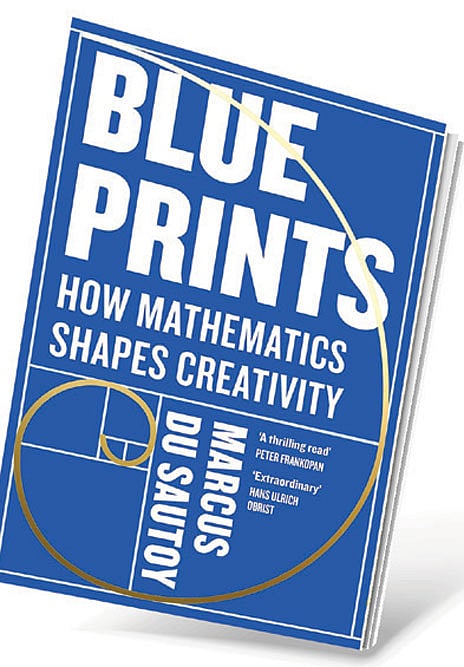The Geometry of Life

IN A NEW HOUSE recently designed and built in Delhi, the homeowners’ fortunes went into a precipitous decline soon after they moved in. When some months later a friend suggested a wholly unique and untested idea: a cosmic energy correction for the house, they were ready and willing. An energy consultant suggested a corrective course for the realignment of the home’s energy field. A set of tiny silver pyramids were inserted in different places within the floor, and—as the consultant explained—a geometric triangulation was used to harmonise the prevailing mismatched energy. Within a few weeks their luck changed.
How geometry is present in invisible and physical form all around us is the subject of a new book by one of England’s more erudite mathematicians, Marcus du Sautoy. A professor of the Public Understanding of Science at Oxford, his book Blue Prints offers some surprising insights—not just into why cosmic energy fields have a useful and perceptible bandwidth, but also why classical composers like Debussy and Bartók employed Golden Ratios in their music, and how architect Le Corbusier developed the Modulor Man to understand human scale in buildings. From simple to complex, from nature’s visible examples to the more developed geometries of Da Vinci, and the staccato rhythms of Beethoven and Bach, du Sautoy develops his arguments with extraordinary ease, laying bare the make-up of all the varied forms around us—primary shapes like the cube, the triangle, the circle and sphere, numerical principles derived from the Fibonacci series, the Golden Ratio, Symmetry and Asymmetry, even the convoluted logic of randomness, the book is a revelation for the mathematically dyslexic and agnostic.
I have always been uneasy with books that deal with numbers and explain the world through some form of applied mathematics and physics. In three attempted readings, I couldn’t progress beyond the introduction in the classic book Gödel, Escher, Bach by Douglas R Hofstadter. Blue Prints by contrast is a starkly simple read, yet wholly mesmerising in its premise that almost all aspects of human creation in art, architecture, astronomy, music, science or technology—are invariably derived from mathematics.
Du Sautoy often uses storytelling to enlarge his case for mathematical connection. In 1970, when Bob Dylan was receiving an honorary degree at Princeton, millions of cicadas emerged in the shrubbery around to drown out his speech. The emergence of the insects, the author explained, happens every 13 years, 13 being a prime number, while their predator appears in multiples of nine years, a non-prime. The progression thoughtfully worked out by the insects to avoid a blood bath. Every numerical fact is backed with biological and historical evidence. And there are many: the stem of a plant grows at 137.5 degrees from the leaf below so as to maximise contact with sunlight; Tolstoy combined short and long sentences in mathematical fractals, where long thoughts were numerically interspersed with short sharp bursts. So too with painter Salvador Dali, who used 4-dimensional geometry to depict the Crucifixion.
For most of us who hated geometry in school, despised trigonometry, and failed calculus, who even today have trouble tallying the receipts in a restaurant, we owe Du Sautoy a huge debt. Not only is mathematics now more palatable, but by applying it to familiar music, buildings, plants, dance steps, poetry, and biology he has made it entirely attractive and wholly comprehensible.

